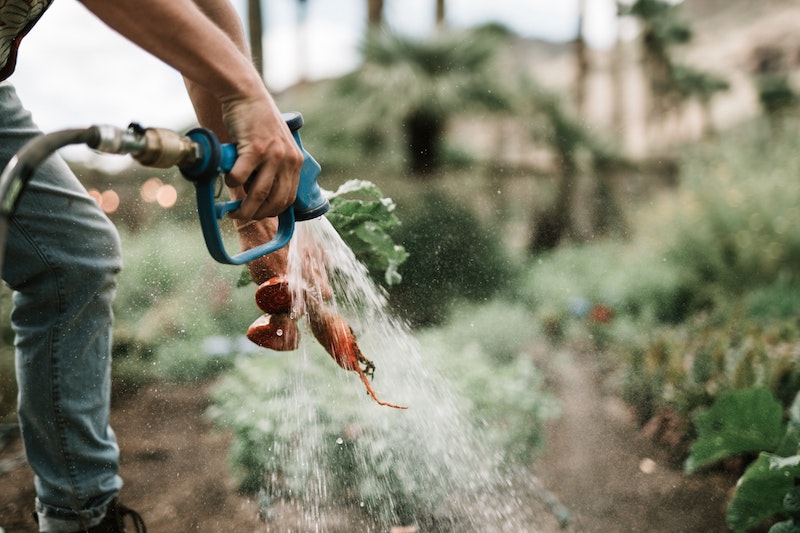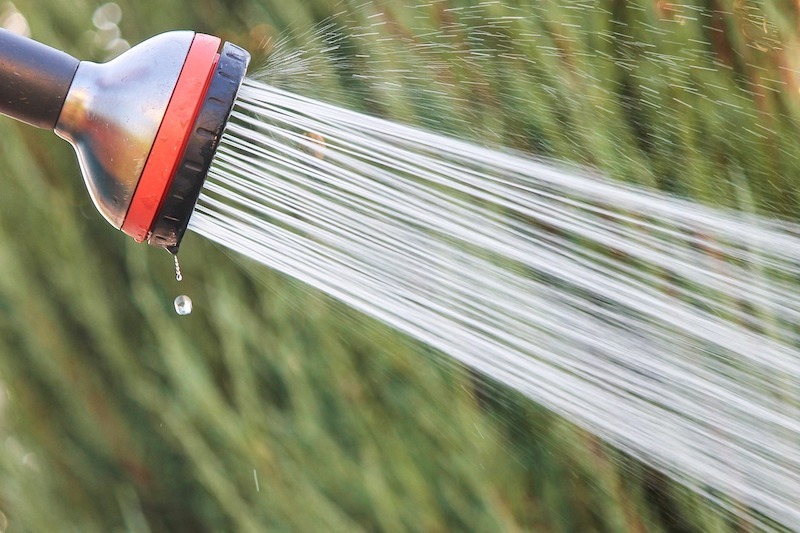As we are now in spring, your attention is now probably turning to your garden and the various plans you may have for it over the next few months. One of the most important jobs you will have is ensuring your plants, flowers, and even the grass stays properly hydrated. To do this, one accessory you will need to invest in is a garden hose, if you don’t already have one, especially if there is not enough rainfall in your area during spring and summertime.
Although it may seem easy enough to just buy the first hose you come across. However, to make sure you don’t waste your money, there are several things you need to consider. Below we are going to discuss exactly how a garden hose and the connected hose nozzle works and look at some of the different kinds and why you might invest in them.
How Does a Garden Hose Nozzle Work?
The fundamentals behind how a garden hose nozzle works and how it connects are relatively simple. You have the garden hose and your outdoor spigot. On the hose itself, you will find that its two ends are threaded a little differently from one another. One is fitted with a cuff that is designed to attach onto the spigot’s threading, which means it can be tightly secured in place when the water is turned on and starts to flow.
The Hose Connection and Construction
At the opposite end of the hose, there will be different threading, which allows for either a secondary hose or one of the many different accessories out there to be connected to it. Once your hose is secured in place on the spigot, the fiber or rubber the hose is constructed from is made to hold the water back if your hose has a sealed valve on it. Without one of these, as soon as you turned the water on at the spigot, the water would flow freely through the hose, and you’d have no control over it.
Different Attachments and Valves
There is a wide range of different attachments, nozzles, and valves that can all be connected to that opposite end of the hose. These all change how the water flows out. Whereas a basic valve will give you control over the water pressure and volume flowing from the hose, sprayers and nozzles will alter how the water flows, whether it’s a gentle shower or a precise and high-powered pressure stream.
Depending on what you are looking for, you can also invest in attachments like sprinklers that can distribute water to a more expansive area of your garden without you needing to hold it.
Let’s open this up a little bit more and discuss some of the most common hose nozzles.
Pistol Grip
Probably the most common type of nozzle on the market is the pistol grip hose nozzle. This is a handheld option that works by you applying pressure on a trigger with the palm of your hand. To stop the flow of water, you need to release the trigger. Most offer you some control over how quickly the water flows by how far you press the trigger.
Dial Nozzle
Dial nozzles, as you might imagine, have a dial at the front, which allows you to switch between several spray patterns. Generally, most tend to have the following spray patterns as standard:
- Shower
- Soak
- Mist
- Cone
- Flat
- Jet
Why would you invest in one of these? If you have many different applications for your garden hose, you may require different spray patterns. While you may want to use a soaker style pattern for a large fruit-bearing tree like a lemon tree, you may want to use a mist spray pattern on your cuttings.
Wand-Style Nozzle
Wand-style garden hose nozzles are effective for use in the garden, as they help you to reach those plants that are harder to reach than others. They consist of a long stick-like design, and some even can be telescopic to extend even further out, with the spray at the end.
Fireman Nozzle
A fireman nozzle, as you may imagine, is one that allows a high volume of water at a very high pressure to flow through it. These are the perfect choice for tasks like cleaning your driveway or car, but not so good for watering the garden, particularly if you are growing very delicate or sensitive plants and seedlings.
There is no need to feel overwhelmed when it comes to choosing a suitable garden hose and nozzle; you just need to think carefully about how you intend on using it and follow the above as a guide.


